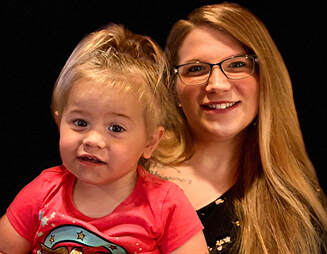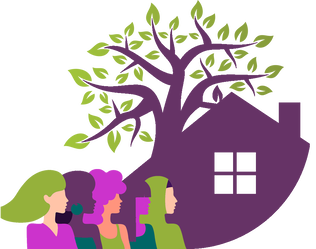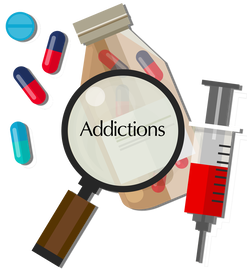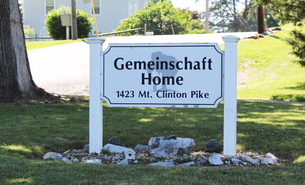|
Former Day Reporting Center Program Participant Discusses her Recovery and Helping Others  Photo credit: Kim Shahan Photo credit: Kim Shahan By Jazmin Otey When Leah Wolfe attended her first Day Reporting Center (DRC) meeting, a 90-day diversion program intended to reduce the local jail population, she could not wait for it to end. All her mind could only focus on was Nevaeh, her newborn daughter. She had not seen her since she had given birth during incarceration three months prior, because after her release from the hospital, she had been ordered to leave little Nevaeh and return to jail to complete her sentence. “It was like ripping part of my soul out, the only thing that got me through was knowing I would have her back in a few months,” Wolfe said. As the 90 days came to a close, her perspective of the DRC program had changed immensely. “I really fell in love with recovery here, because the case managers care, and some of them have been through it,” she said. “They have the experience you can’t get from a textbook.” She had become so involved with the program and its participants that she voluntarily stayed for additional time even after graduating. For Wolfe, helping others was part of her recovery. During this time, she attended meetings with her now two-year-old daughter sitting next to her. Now, Wolfe has been clean for more than two years, has become certified as an addiction recovery specialist, and runs her own weekly recovery group at Grace Covenant Church. Michelle Roberts, the current DRC case manager, was an intern when Wolfe went through the program, but that was not the first time they had met. The pair first encountered each other in jail while serving sentences for drug-related charges. Roberts was shocked to see Wolfe again at Gemeinschaft Home but knew that it was somehow meant to be, and she is proud of how far Wolfe has come. “I use her as an example all the time because she was someone who came into the program determined and took direction,” Roberts said. “Now she’s doing all these amazing things. She’s not just living but she’s thriving. I got to walk the journey with her. And that was a beautiful thing. It reminded me of my own journey [to recovery].” Looking back, Wolfe hardly recognizes herself. There was a time where she didn’t believe she would be able to escape getting high each day. Wolfe was 10 years old when she started smoking marijuana and drinking alcoholic beverages. By age 14, she began experimenting with heavier drugs, was in and out of toxic relationships, and self-harmed frequently. At 20 years old, she was arrested and ordered to serve a two-year prison sentence for a drug conviction. After the sentence, she found herself in the same circumstances she had been in prior to incarceration, and, in 2017, when she had been caught using drugs a month before the end of her probation period, she went on the run. It was during this time that she discovered she was pregnant with Neveah. Wolfe knew instantly it was time for a change. She managed to stop her toxic addiction in July 2017, however, police enforcement caught up with her in September, and she was sentenced to jail for one year for violating her probation conditions. After her positive experience with DRC, Wolfe hopes to see Gemeinschaft Home’s Community Residential Program (CRP) expand to women in the future. The CRP program currently offers room and board to help men become more stable, but women face their own unique problems such as motherhood, pregnancy, abusive relationships and emotional trauma that could be addressed in a CRP program geared toward women. “It’s sad, but most people have burned their bridges through their addiction, so they don’t have a support system,” Wolfe said. “You can’t grow in an environment that you wilted in, and we need an environment to help people thrive. It’s so hard for women.” In the meantime, Wolfe hopes to continue showing others it’s possible to overcome addiction: “I would definitely say there is hope moving forward. Looking at the people that have overcome it is hope in itself,” Wolfe said. How the Local Area Can Benefit from Women’s Residential Program and Support  Contributors: Genesis Hernandez, Brianna Ramos, and Megan Klepper Although the stigma of addiction has seemingly decreased over the past few years, why is it that we still know so little about it? Moreover, why do we know even less about women with addiction? In her 2015 article regarding Hollywood’s narrative on addiction, writer Biju Belinky describes how—regardless of the increased representation of the disease in the media—most of the stories being portrayed are those of men. Rarely are the stories of real women fighting addiction given an appropriate plot or platform. The consequences resulting from this are amplified when comparing the ever-increasing rates of substance abuse amongst women with the near-stagnant number of recovery programs specifically designed for women. Lack of awareness regarding women with addiction is clearly correlated to lack of funding for recovery services for women. This lack is most prominent in rural towns and counties that are faced with a serious rise in substance abuse among women yet have an unbalanced array of resources available to those seeking treatment. The Harrisonburg/Rockingham County area is no different. Although there are various co-ed recovery programs located in Harrisonburg, the residential programs (including Gemeinschaft Home) are often limited to male residents. There were no female recovery homes in the Harrisonburg area until the opening of Oxford House Trillium earlier in January of this year, which still holds far fewer residents than Gemeinschaft Home’s current men’s program. Whenever any attempts to expand women’s services are made, financial shortcomings eventually impede agencies and organizations’ ability to keep the programs running, as was the case in 2008 with the closing of Gemeinschaft Home’s women’s residential program as a result of the Great Recession. Since then, local women seeking treatment had to either decide between temporary displacement to larger cities like Charlottesville or Richmond—if they preferred the tighter accountability of a self-sustaining recovery home—or enrollment in non-residential co-ed programs, such as Gemeinschaft Home’s Day Reporting Center (DRC), if they desired to stay closer to home. In the latter case, they irretrievably lost the experience of recovery with a strong, female support system. However, robust female support systems have major positive impacts on women’s paths toward recovery and help them to overcome triggers such as heartbreak, motherhood, and societal chauvinism—issues that are not typically addressed in co-ed programs, because they are not considered relevant to the majority of (male) participants. The gender-based disproportion of available recovery homes creates additional hardships for women during their reentry and recovery processes. As one woman put it: “Men get this chance to get on their feet and get their own place, save money, and do what they need to do and get the help that they need, while women have no chance to start over because they don’t get the same resources.” The need for recovery homes for women is even more significant when looking at the populations of women with addiction who have also endured further trauma through issues like abusive relationships and/or single motherhood, which, again, are not addressed in co-ed programs and result in women leaving such programs without knowing how to approach or resolve troubling situations by themselves. However, women with addiction, especially at the start of their recovery, most need a support system that approaches their issues from a female perspective. Community residential settings like those at Gemeinschaft Home provide a clearly structured environment that calls on each participant to contribute to the functioning of the community. Individual accountability for those contributions leads to stronger bonds between the residents and ultimately helps them keep one another in check in case of any slip ups with treatment. This further strengthens and reaffirms the structure and values within the home and enhances the sense of responsibility, trust, and support among the residents. Many of these values are reflected in women’s programs such as the Pennsylvania-based Junction House and Thistle Farms in Nashville, Tennessee. As noted in Junction House’s website, some of the many benefits for women include the ability to “form solid sober support systems,” “transportation to outside meetings, help with case management, [facilitation of] medication, ... life or sober coaching to residents,” and even serve as a safe space for women with trauma resulting from childhood or their lifestyle of addiction “to heal, rebuild their self-esteem, and begin the work necessary to recover.” Likewise, Thistle Farms bases itself on providing female survivors of addiction, trafficking, and prostitution with a fresh start at life through their two-year program that guarantees their residents “a safe and supportive place to live, a meaningful job, and a lifelong sisterhood of support.” Recognizing the abundance of benefits of community-based residential programs, it is evident that these resources must be made accessible to women with addiction in the Shenandoah Valley and beyond. Gemeinschaft Home’s existing men’s program provides a well-tested model for women’s services. Used in tandem with the essential values of female support systems, this model can aid women on the path to recovery and, in the process, strengthen families and communities. Gemeinschaft Home partners with the Rockingham Harrisonburg Drug Treatment Court Program, to provide housing for males who need residential support.  Contributors: Paige Sinno, Hannah Kaufman, Joseph McCarthy Before December of 2017, the only option for offenders with chronic drug and alcohol addictions was jail time. Since then, the Harrisonburg-Rockingham Drug Treatment Court, or Drug Court, for short, has been providing a new approach with an addiction and life recovery program which allows nonviolent, repeat offenders, who plead guilty, to have their sentencing delayed in order to complete a rigorous two-year process focused on addiction education, treatment, and supervision. The push for a local drug court started about two years ago as several community leaders raised concerns about the growing inmate population at the Rockingham County Jail. The initiative had the backing of the Harrisonburg-Rockingham Community Criminal Justice Board, which was looking to ease overcrowding at the jail. Outside of Harrisonburg, the state of Virginia offers 36 drug treatment facilities ranging from all points of the state. Drug courts are a nationwide initiative, existing in all 50 states, as well as an international movement in the Americas and the Caribbean, Australasia, and Northern Europe. However, drug courts operate on a local level and are specific to each community. Drug court cases are on a separate court docket with dedicated judges who take a somewhat unusual route to pursue three primary goals: to reduce substance use, to lower recidivism rates, and to rehabilitate participants. Drug court is a community effort; it involves the daily communication and teamwork of judges, court personnel, treatment providers, case managers, and other social service workers, as each participant requires a specialized program based on their personal needs. The program is aimed toward recovery by holding participants to honesty and demonstrated effort above all else; mistakes, including relapse or violation of procedure, are sanctioned but not disqualifying until their accumulation makes recovery appear untenable. Participants do not have their charges removed upon completion but rather avoid incarceration and continue on a path to sobriety, while those who opt out or have their program terminated must return to court to face sentencing. The Harrisonburg/Rockingham Drug Court program began with only 20 participants and has grown to offer services for hundreds of city and county residents. Participants, who are classified as nonviolent but likely to reoffend, go through five program phases lasting almost two years. With each phase the intensity of supervision and treatment is progressively reduced. Throughout the entire program, participants will follow their own individualized treatment plan and be administered drug tests to ensure their adherence and recovery. Every participant is held accountable to rigorous standards throughout the course of the program. One of the issues the drug court and its community partners are facing is the shortage of stable housing for those involved in the program. Currently, there are few housing options for men in Harrisonburg, including Oxford House and Gemeinschaft Home. There are almost no housing options for women going through the program in Harrisonburg. For more housing accommodations to be made available for participants—women in particular—the Harrisonburg community will need to be on board with the process and fully recognize the value of the program. One way to get more community buy-in is to point out that the drug court is beneficial for the Harrisonburg community in terms of both costs and community development. Providing nonviolent drug reoffenders with an alternative to jail helps to actually treat them so that they can one day contribute to society in a meaningful way. A study funded by the Department of Labor found on a national level that 84% of drug court graduates have not been rearrested after the first year, and 74% of participants have no arrests after two years of graduation. And, according to the U.S. Department of Justice’s drug court evaluations, the likelihood of offenders being incarcerated after completing the program and being diverted to drug court is reduced, between 50 percent and 60 percent. Studies also have shown that, even with treatment costs included, drug courts saved localities an overall average of $5,600 to $6,200 per offender compared to incarceration. While new to the Harrisonburg area, the drug court program is truly valuable to the community. Within the last year the community has seen 2 successful graduates, and currently there are around twenty participants awaiting graduation and new beginnings. Gemeinschaft Home furnishes support for participants in a number of county and court services programs, including the Harrisonburg-Rockingham Drug Treatment Court. Dr. Amanda Teye, a JMU professor who helped establish the local drug court program, points out that “Gemeinschaft Home serves a dual function in helping the program maintain its effectiveness by allocating residential space and assistance in relapse and recovery care” via randomized and weekend drug testing of participants. Drug court is essential for those who have not responded well to traditional supervision, such as probation after incarceration. Because the program serves the local community, participants must be local residents, demonstrate a high risk of recidivism based on their continued addiction, and have never been charged with or convicted of violent or gang-related crimes. Depending on individual needs, male drug court participants receive residential services at Gemeinschaft Home, particularly during the first two phases of their treatment plan. That means they receive room and board and are held to the same standards and duties of organized community living as residents in the other programs. Thus, Gemeinschaft Home is not just a place for these men to sleep, but an ever-acting classroom for lessons of responsibility, sobriety, and purpose in life. Overall, the Gemeinschaft Home and Drug Court partnership helps the community provide formerly incarcerated and chronically addicted individuals enhanced services to help straighten out their lives. Addiction, Relapse, and Recidivism  Contributors: Catie Lewis, Leah Coffey, and Dylan Seagrave For many of the individuals who participate in Gemeinschaft Home’s programs, forward progress is often hindered by one venomous vice—addiction—a disease of the brain and fundamental human condition that exists across every race, culture, nationality, gender, age, and socio-economic background. It is important to recognize addiction as a disease, despite the pervasive cultural narrative that addiction is a personal choice. Both the American Medical Association and the American Society of Addiction Medicine define addiction as a disease: “Choice does not determine whether something is a disease. Heart disease, diabetes and some forms of cancer involve personal choices like diet, exercise, sun exposure, etc. A disease is what happens in the body as a result of those choices.” Addiction to illegal substances creates an even more complex situation, because society generally condemns the possession and use of drugs as a moral failing—a crime to be punished, rather than a disease to be treated. It is probably safe to say that most people would not blame cancer patients for bringing the disease upon themselves via poor eating habits but are quick to pass judgement on individuals who struggle with substance abuse, because their addiction is based on illegal behavior. While this punitive perspective may deter some individuals from ever engaging in illicit drugs, it offers an ineffective solution for those individuals who have already fallen victim to an illegal substance addiction. Substance abusers often get snared in a cycle of incarceration, release, and re-incarceration, which only exacerbates the disease of addiction, rather than treating it. Recidivism is likely among addicts whose behavior is characterized as a crime, not a disease, and relapse is inevitable, without proper support and treatment, leading to re-incarceration. Because addiction is still considered a staple of criminality and degeneracy, relapse most often provides the basis for law enforcement rather than medical intervention, particularly for individuals who are on probation and subject to a zero-tolerance drug use condition. Yet, the American Addiction Centers offers some helpful information to combat the negative stigma surrounding relapse, stating that, “Relapse is considered a normal part of addiction recovery and should be understood to be a stepping-stone on that path and not as the end of the road. Relapse often indicates that treatment needs to be reinstated or adjusted. Relapse can vary in its intensity and duration as well, and there are several ways for a person to decrease episodes and severity of relapse through treatment programs, therapeutic methods, and a strong support system.” Thus, relapse is a physiological response to and result of addiction that is virtually impossible to address with punitive measures like incarceration. Yet, without intervention, substance abuse addiction dramatically increases motivation for criminal activity—such as drug sales and purchases, theft, robbery, fraud, or other crimes that provide access to or pay for illicit substances—which leads to (re)incarceration and keeps the cycle of recidivism spinning. Individuals who struggle with addiction benefit tremendously from a structured program upon release from (or as an alternative to) incarceration; when faced suddenly with life on their own, the imbalances created by addiction in their brains dramatically increase their chances of relapsing or reverting entirely back to drug abuse. Gemeinschaft Home’s programming maintains a primary mission of self-recovery and redirection away from negative tendencies and habits that lead to incarceration. Approaching addiction as a disease—not a crime—is a philosophy that informs the services provided by Gemeinschaft Home, and while we cannot prevent individuals from being incarcerated as a result of their addictions, we can work to address underlying problems associated with substance abuse that lead to criminal behavior and, ultimately, incarceration. In other words, if we engage in empathy instead of punishment, we make our communities healthier and safer. A Look Back at the History of Gemeinschaft Home  Photo credit: Kurtis Blosser Photo credit: Kurtis Blosser By Daniel Martin A white van turns left off the main road and pulls into the driveway at a Victorian style building. Out steps an armed guard, accompanied by an individual with his hands shackled behind him. A seemingly typical Department of Corrections transfer is taking place. Here, however, the guard sets down his gun and leans it up against the side of the vehicle. He unshackles the now ex-offender’s arms, who walks free from physical chains up to the front door of the building. The individual has arrived at 1423 Mt. Clinton Pike, which looks out not over prison walls of concrete and metal fences topped by barbed wire, but across open, green fields full of cattle. The house, which has come to symbolize the next step on the road to freedom, is Gemeinschaft Home. From its humble beginning in 1985, through the ups and downs of finances, circumstances, successes, and failures, Gemeinschaft Home has come fully to embrace its name--Gemeinschaft means community in German. In 1973, the home was used by a group of students and faculty from Eastern Mennonite College (now Eastern Mennonite University), who worked to form a Christian-based, intentional living community. They named it “Gemeinschaft,” in honor of their goal to live and work together. After five years of communal living, the community dissolved, and the house stood vacant for two years. In 1979, Barry Hart and Jerry and Kathy Sisley, part of the original intentional community group, saw the need for a halfway house in the area and decided to use their home to house ex-offenders, mentally ill patients, and foreign refugees. They established the new facility in collaboration with a core group of 6-8 Harrisonburg community members, forming another iteration of the intentional community that they also called Gemeinschaft Home. The decision to create a halfway house community was made ad hoc, with no involvement from the Virginia Department of Corrections (VADOC). Gemeinschaft Home carried on for five years, often with 1-2 ex-offenders living with members of the intentional community. After five years, however, the transitory nature of the arrangement--both ex-offenders and community members would come and go--the community faltered. In the meantime, Hart, along with Titus Bender, a professor at EMC, and Larry Hoover formed an organization called “Neighbors in Corrections” that focused on alternatives to incarceration. City leadership at the time, encouraged Hart, Bender, and Hoover to revisit the idea of a community-based halfway house. By this time, however, an auction was already underway to sell the property and the house. At the last minute, literally while the auctioneer was getting ready to start bidding on the house, Hart, Bender, and Hoover decided collectively that they could not just let the last 5-6 years go to waste. Lewis Strite agreed to put up the money to purchase the property, and the group stopped the auctioneer. Strite then sold the house to a consortium, including Barry Hart, and a month and a half later (June 4, 1985), Gemeinschaft Home was incorporated as a non-profit organization. While the concept for Gemeinschaft Home in its current form was established at this time, there were still other steps to be taken in the community. The Rockingham County Board of supervisors had some concern, because of a previous attempt to create a halfway house near Broadway, Virginia (about 13 miles north) that had resulted in a bomb going off at the construction site, as members of the community did not want a halfway house built at the location. The Board of Supervisors did not want a repeat of such an event at Gemeinschaft Home, and they asked for clarification about the exact plans of the consortium. Hart and the other members pointed out that they had been part of the community for numerous years and had formed positive relationships with their neighbors. A meeting at Blessed Sacrament Catholic Church in Harrisonburg, on August 7, 1985, served only to confirm the group’s statements. The local community was invited to respond to the idea of a halfway house in the area, and the response was overwhelming support. As the year came to a close, a board of directors was formed, and plans were drawn up to open the facility. The house, built in 1895, was in a state of “ill-repair,” and numerous renovations were needed. From January 22-29,1986, work on the house was carried out by volunteers from local church groups, student volunteers from EMC and James Madison University, as well as six offenders from minimum security prisons provided by the VADOC. Such a diverse group of people further underscored the positive community attitude toward the idea of Gemeinschaft Home. In 1986, Gemeinschaft Home received tax-exemption status, gained support from the new head of the VADOC, gained its first director, Diane Stiteler Gray, and its first house manager, Byron Humphries. With all of the pieces in place, Gemeinschaft Home officially opened its doors on Sunday, September 28, 1986. Over the next 20 years, the idea of Gemeinschaft Home gained traction, the home, now funded as a therapeutic community by the VADOC, expanded, increasing the numbers of residents, adding a female program and multiple locations in Harrisonburg and one facility, Piedmont House, in Charlottesville, VA. However, the Great recession of 2008/2009 brought many challenges to the organization--the annual budget shrank from about $1.5 million to $500,000 almost overnight, and the VADOC converted their therapeutic communities from six-month to three-month programs. As a result, Gemeinschaft Home was forced to close down all but the original CRP program located on Mt.Clinton Pike. Yet, the past decade has also brought new opportunities, including the development of The Day Reporting Center, in 2016, a partnership with the local Drug Court, in 2017, and numerous collaborations with local colleges, universities, and other community partners. Now the priority is to establish a new residential program for women. As Gemeinschaft Home is honoring its history on the occasion of its 35th anniversary the main goal, which according to Hart, was to “provide both a physical place and mental space for people to take a breath after prison before going back into society fully” is still firmly in place. And, as the organization is looking toward the future, its guiding value of honoring people and their dignity will continue to place it at the forefront of positive change in the community.  Contributor: Andrew Garrison The process of leaving incarceration and integrating back into society is a challenge for a number of reasons. Frequently, with little support, each individual must navigate a range of obstacles to find stable housing and employment, to maintain physical and mental health, and to reestablish social relationships with spouses, children, and other family members. Financial obligations such as paying off court fines and setting up child support agreements complicate matters more, as each person tries to build a new life after serving time. Even the process of obtaining a drivers license again can be expensive and tedious, but it can be the deciding factor in someone’s ability to maintain a job. In many cases, people in this situation need extra help to get back on track, and often this help comes from organizations like Gemeinschaft Home. For 35 years, this unique nonprofit organization has used the philosophy and ethics of a therapeutic community to help teach, support, and prepare recently released individuals for a new life. From the minute new participants walk through the door, they are a part of Gemeinschaft Home’s therapeutic community and programs that incorporate all aspects of life into the reentry process. The programs at Gemeinschaft Home—the Community Residential Program and Self-Pay Program, the Drug Court Program, and the Day Reporting Center all offer settings in which participants gain valuable skills and strategies for acceptable living, as well as the motivation to become productive citizens in the community at large. The Community Residential Program (CRP) is based on mutual trust and respect, shared leadership and responsibility, mentorship, and the idea of “graduated freedom.” Residents participate in the daily and weekly chore schedules to maintain the cleanliness and upkeep of the house and to learn accountability and helpful life skills. The resident leadership structure provides opportunities for regular development meetings and a formal grievance and conflict resolution procedures. The emphasis placed on residents making decisions for themselves or as a group creates a sense of autonomy that is important during their transition stage, as it encourages personal responsibility and consideration for self and others. The Self-Pay program is designed for males from the local area who have completed the 90-day program, and local males in need of residential-based services can apply to live at Gemeinschaft Home at a low-cost fee. The structure of the CRP applies to these residents as well as those referred by the Drug Court (based on their need for residential services). The Day Reporting Center (DRC) is a collaborative initiative with the Harrisonburg/Rockingham County court services that provides an alternative to incarceration for selected individuals in the pre- or post-trial process. Participants enroll in the program enabling them to sustain employment, childcare, and other obligations, while receiving needed services and supervision. Depending on their level of need, they report from 1-5 days per week for a combination of mandatory drug screens, case management, and group and individual sessions. Male participants with a high need for structured supervision can receive residential support as well. Therapeutic interventions at Gemeinschaft Home, for residents and non-residents alike, come in two primary forms: group and individual sessions covering key areas of life recovery (self-awareness, relapse prevention, emotional control, conflict resolution, etc.) and case management providing practical guidance through the reentry and recovery process, referral services, and a personal accountability mechanism. Gemeinschaft Home’s therapeutic community approach is essential for engendering mutual and self-respect among the participants and helping them regain some of the autonomy they have lost. This supportive structure helps them get a better understanding of themselves and others, ultimately contributing to an environment built to grow and to uplift one another. |
Archives
August 2023
|